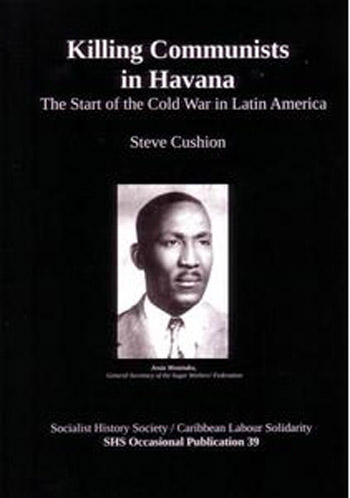|
KILLING
COMMUNISTS IN
By Steve Cushion
The Socialist History Society/Caribbean Labour Solidarity. 57 pages.
£5. ISBN 978-0-9930104-4-6
Reviewed by Helen Larkin
“On January 22nd, 1948, Jesús Menéndez, General Secretary of the
National Federation of Sugar Workers, the largest and most important
trade union in Cuba, stepped down from a train in the town of
Manzanillo and was shot in the back by an army officer”.
Those are the opening words of this slim, but interesting account of
how communists in
But if American gangsters were present, the Cubans had plenty of
their own to carry out killings when there were power-struggles
inside various unions, and especially against communists who
had established a presence in the leaderships of the public
transport, sugar, and dockworkers unions. There was often also a
substantial communist membership among the rank-and-file workers.
The Party had been looked on reasonably favourably when the
The attitude towards communists soon altered when the war ended and
anti-communist propaganda began to increase in the
Once the Cold War got underway in earnest, attacks on communists
increased and Steve Cushion lists the bus drivers, dockers, sugar
workers, and others who were killed or beaten up. It wasn’t just the
police or the army carrying out such actions, but also gunmen from
rival factions in the unions. Anti-communism was often an
opportunity to muscle in on union leaderships and so obtain access
to substantial union pension funds. That sort of gangsterism was
encouraged by the government. The conservative American Federation
of Labour, always happy to play a part in opposing communism, was
used as a conduit to move funds to anti-communist elements in Cuban
unions.
Killing Communists in Havana
is a well-researched and detailed survey of the harassment and
assassinations of communist activists. I have to admit that there
were times when I found myself somewhat overwhelmed by its plethora
of names and their abbreviations – PRC-A, PSP, CTC, ARG, FNTA, and
more - and
had to keep checking back to see who or what was being
referred to. But otherwise I found this small book of use in filling
in the background to Fidel Castro’s successful revolution in 1959.
|
